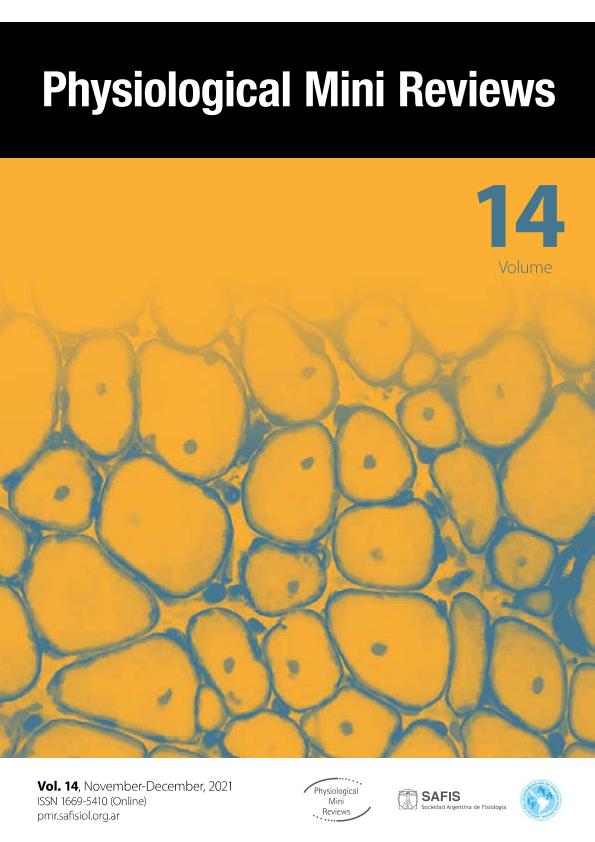Artículo
Una característica distintiva de COVID-19 es su baja tasa de mortalidad, donde la principal causa de muerte está relacionada con el desarrollo del síndrome respiratorio agudo severo (SRAS). Este síndrome involucra una reacción inflamatoria exacerbada, frecuentemente conocida como tormenta de citoquinas, principalmente en los pulmones y sobre-activación concomitante del sistema reninaangiotensina-aldosterona (SRAA). En consecuencia, este "cóctel explosivo" puede provocar la muerte o secuelas respiratorias permanentes en pacientes infectados con SARS-CoV-2. En este sentido, se han propuesto múltiples estrategias terapéuticas. Entre ellas, destaca la vitamina D que ejerce numerosos efectos inmunomoduladores al actuar sobre diversos tipos de células inmunes y epiteliales, además de poder estimular el brazo protector [(ACE2/Ang-(1-7)] e inhibir el brazo dañino (ACE/Ang-II) del SRAA. Por ello, en la presente mini-revisión se analizan algunos de los principales mecanismos subyacentes a estos efectos mediados por la vitamina D y sus receptores. El conocimiento y proyección traslacional de estos mecanismos influiría positivamente en la prevención y tratamiento del SRAS. Por lo tanto, la evidencia actual sobre la vitamina D y COVID-19 suma argumentos a la terapia racional con respecto a reducir o evitar la progresión de la enfermedad y mejorar el pronóstico. A distinctive feature of COVID-19 is its low mortality rate, where the leading cause of decease is related to the development of severe acute respiratory syndrome (SARS). This syndrome involves an exacerbated inflammatory reaction, frequently known as cytokine storm, mainly in the lungs and concomitant over activation of the renin-angiotensin-aldosterone system (RAAS). Consequently, this "explosive cocktail" can lead to death or permanent respiratory sequelae in patients infected with SARSCoV-2. In this sense, multiple therapeutic strategies have been proposed. Among them, vitamin D stands out as it exerts numerous immunomodulatory effects by acting on various types of immune and epithelial cells, in addition to being able to stimulate the protective arm [(ACE2/Ang- ( 1-7)] and inhibit the damaging arm (ACE/Ang-II) of the RAAS. Therefore, in the present mini-review, some of the main mechanisms underlying these effects mediated by vitamin D and its receptors are analyzed. Knowledge and translational projection of these mechanisms would positively influence the prevention and treatment of SARS. Thus, current evidence on vitamin D and COVID-19 adds arguments to rational therapy regarding reducing or avoiding disease progression and improving prognosis.
A rational approach between vitamin D, immunomodulation and the renin-angiotensin system linked to prevention and treatment of severe acute respiratory syndrome by Covid-19
Fecha de publicación:
12/2021
Editorial:
Sociedad Argentina de Fisiología
Revista:
Physiological Mini Reviews
ISSN:
1669-5410
Idioma:
Inglés
Tipo de recurso:
Artículo publicado
Clasificación temática:
Resumen
Palabras clave:
VITAMIN D
,
COVID-19
,
TREATMENT
,
SEVERE ACUTE RESPIRATORY SYNDROME
Archivos asociados
Licencia
Identificadores
Colecciones
Articulos(IMBECU)
Articulos de INST. DE MEDICINA Y BIO. EXP. DE CUYO
Articulos de INST. DE MEDICINA Y BIO. EXP. DE CUYO
Citación
Martín Giménez, Virna Margarita; Carmona, Maximiliano; Manucha, Walter Ariel Fernando; A rational approach between vitamin D, immunomodulation and the renin-angiotensin system linked to prevention and treatment of severe acute respiratory syndrome by Covid-19; Sociedad Argentina de Fisiología; Physiological Mini Reviews; 14; 6; 12-2021; 73-82
Compartir




